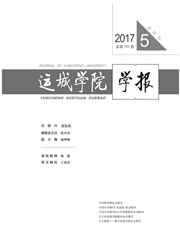

 中文摘要:
中文摘要:
游憩价值评估研究领域一直缺乏对文物景区的关注.评估文物景区游憩价值时要考虑其文物、古建筑吸引物的空间容量受限、景观展示方式单调、愿意支付群体受限等基本特性的影响.以凤凰山景区为例,选取了旅行费用法和收益法分别对其游憩价值进行评价.结果显示:应用旅行费用法评估得到2010年景区游憩价值为11.2亿元人民币,应用收益法评估得到景区可预见经营期内的总游憩价值为108.12亿元人民币。收益法评估值相对偏低.两种评估方法的共同点是理论基础都是效用价值论,都反映了评估对象为权利主体人所能带来的效用价值;不同的是旅行费用法是从游客支出的角度进行评估,需要进行严密的游客调查设计,因其考虑到“消费者剩余”部分而使评估更全面、可靠;收益法则是从景区收益的角度进行评估。操作简便易行.但受主观因素影响较大.
 英文摘要:
英文摘要:
Recreation value evaluation on the cultural relics tourist attraction has seldom been researched. The assessment will be influenced by such basic characteristics of the cultural heritage tourist site as its smaller spatial capacity inside, tedious landscape display method, less numerous tourists, etc. By the method of travel cost interval analysis (TCIA) and income approach (IA), this article accounts the recreation value of Fenghuangshan cultural relic tourist site. The study reveals as follows, using TCIA method, the recreation value in 2010 is about RMB1.12 billion Yuan; using IA method, the total recreation value during the oper- ation period in the future is about RMB10.81 billion Yuan. The latter result is relatively lower. Both evaluation methods have the same theoretical basis in common, utility theory of value. The main difference between them is that TCIA method is more reliable by means of strict questionnaire from the angle of travel expenditure, while IA method, from enterprise's profit perspective, is often influenced by subjective factors despite its advantage of being much easier to process.
 同期刊论文项目
同期刊论文项目
 同项目期刊论文
同项目期刊论文
 期刊信息
期刊信息
